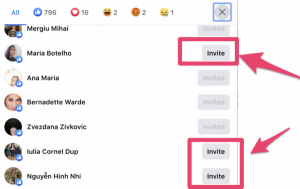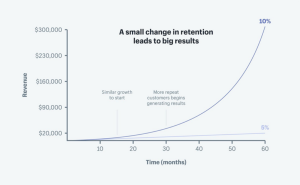Lead Scoring: The Value In B2B Marketing
Discover how lead scoring can transform your business by streamlining your sales & marketing efforts, increasing revenue, & boosting your ROI.

How are you managing leads in your business?
Are you spending hundreds of hours working through each one manually?
Are you having to guess which leads are more likely to result in conversions?
Or are you converting leads, but having trouble deciding which to focus on first?
If you answered “yes” to any of these questions, it’s time to stop prioritizing lead management and start concentrating on lead scoring instead.
What Is Lead Scoring?
We all know how crucial lead generation is to a business, but what happens when you have the leads but don’t know what to do with them? Which leads are the most valuable, which leads have the most potential, and which can you safely ignore?
These are the kinds of questions that lead scoring answers.
As the name suggests, lead scoring is the practice of assigning points to each of your leads, usually between 1 and 100.
Scoring criteria vary from business to business, but they’re most often based on factors like customer behavior, brand engagement, demographics, and segmentation. Once you’ve assigned a score to a lead, you’ll then have empirical data your sales and marketing teams can use to drive conversion.
Sounds simple enough, right?
It’s certainly effective enough. According to a study from Information Technology and Management, effective lead scoring models deliver excellent performance in annual revenue (i.e., a 50% average increase).
But what goes into good lead scores, and how do you use them to deliver qualified leads?
While your own B2B lead scoring model will be individual to your particular business, most lead scoring frameworks are built on data acquired from existing leads.
This will usually take the form of information submitted, actions taken, or engagement across various channels. You can then choose to either assign your scores manually (which can take a lot of time) or to use a predictive lead scoring model (which can save a lot of time).
Either way, you’ll have the information you need to streamline your marketing efforts and concentrate on viable, valuable leads. And that’s how you turn prospects into customers with lead scoring.
The Benefits Of Lead Scoring
Why is lead scoring important, and just how does it benefit the sales process? Let’s take a look.
Increased Opportunities
With lead scoring, there’s no reason to lose out on conversion opportunities again – because you’ll know exactly which high-quality leads to focus on and which unqualified leads to ignore.
Just ask TeamBuilding, a company whose lead generation boomed over the pandemic. By implementing a lead scoring system, the TeamBuilding team was able to identify qualified leads and use marketing automation to streamline their lead management.
Not only were they able to grow their sales team, but they also tripled their monthly revenue as well – all thanks to the power of lead scoring.
Increased Efficiency
How much time have you wasted in your business reaching out to leads that went nowhere? That’s time and money that a lead scoring system can save you.
Knowing where a lead is in your sales funnel and how likely it is to convert is what lead scoring is all about – and having this information readily available is what makes your business more efficient.
No more time wasted chasing down cold leads; instead, your sales team can strike while your leads are hot, shortening your sales cycle and streamlining your sales process.
More efficiency, more profitability.
Improved Marketing
Marketing campaigns aren’t cheap. So when you’re spending money, wouldn’t it make sense to know which of your campaigns and channels are bringing in the most high-quality leads?
That’s where lead scoring comes in. It’s one of the most valuable tools your marketing and sales teams have in identifying which of your campaigns are working and which aren’t.
If your social media marketing is generating more promising leads than your email marketing, you’ll know where to focus your efforts, where to keep spending money, and where to save money. And that’s how you reach your target audience while boosting your ROI at the same time.
Increased Conversion
Conversion – it’s the ultimate goal of any business, isn’t it? Turning leads into actual sales.
And it’s what lead scoring strategies can help you increase, through identifying high-value leads.
By helping to pinpoint where your potential customers are in the sales funnel, your marketing and sales team will be able to target them more directly, nurturing them at exactly the right time and in exactly the right way in order to make a successful sale.
By giving customers what they want, when they want it, you’ll be giving your company what it wants at the same time – increased conversion and increased revenue.
Improved Sales And Marketing Alignment
Reaching your target audience and making a sale means your marketing and sales teams need to work together successfully. A lead scoring model can help achieve this.
By identifying leads promptly and giving regular feedback to your teams, they’ll be able to refine their campaigns and processes to target your leads more directly. It’s all about communication, collaboration, and empowering your marketing and sales teams through lead scoring to work as one.
How To Develop A Lead Scoring System
Now that you know what makes lead scoring important, how do you go about it?
By creating a lead scoring system that takes your company’s unique needs into account.
It’s all about using data and analytics to identify your most promising leads and using that information to increase your sales effectiveness.
And the lead scoring framework is where you start.
1. Behavioral Attributes
In order to start scoring leads, you’ll need to assign points to them first. And one of the most effective ways of doing this is by analyzing their behavior. Every action a lead takes while engaging with your brand all contributes to their lead score.
This could include downloads, webinars, page visits, or time spent on a page. It should also include email engagement and social media engagement, too – any interactions that a customer has with your brand, including open and clickthrough rates, likes, shares, and reposts.
This kind of behavioral data is known as an implicit attribute: any kind of active or passive behavior or engagement that your lead exhibits.
You’ll need to decide which kind of behavior is more valuable to your brand and then assign point values accordingly. Opening an email might be +1, while downloading a brochure might be +3 – that’s for you to decide as part of your lead scoring tool.
2. Demographics
Another important data set to consider is demographics. This kind of data refers to a lead’s gender, age, race, location, and similar – usually information provided when signing up for an email list or newsletter, or opening an account.
While demographic information may not necessarily have data points assigned, it can be effective when used in conjunction with behavioral attributes – knowing what groups of people are more likely to engage with your brand and across which channels.
This kind of lead scoring is known as explicit lead scoring – data that you’ve been able to collect directly about a particular lead.
3. Segmentation
Another kind of explicit lead scoring data includes segmentation. This is a more focused form of B2B lead scoring that looks at a lead’s company demographics, including company size, revenue, industry, geographical location, ad spend, and budget.
By segmenting these types of leads into high, low, and medium value, you’ll be able to create an accurate picture of their purchasing power and qualify these leads to increase your revenue.
4. Negative Scoring
So far, we’ve looked at the types of lead scoring criteria that can contribute to positive scores.
But what about negative scores? These are just as important to consider when it comes to lead qualification.
Being able to exclude stagnant leads will increase your efficiency and allow you to concentrate your marketing efforts on medium and high-value leads only.
Think about assigning a negative point value for low to no engagement after a certain time or across certain channels, and you’ll refine your lead scoring strategy even further.
5. Build A Lead Scoring Model
You can do this in one of three ways:
- Manual lead scoring: Here, you’ll need to set up your lead scoring model by hand using the criteria we’ve covered. Look at your leads’ attributes, behavior, and data and assign data points, both negative and positive, accordingly. The only downside to this is that it can take time and man hours, something you may not be able to afford, particularly if you’re a small business. And you’ll need to be meticulous with your scoring in order to minimize human error too.
- Probability-based lead scoring: This will follow from your manual lead scoring by incorporating spreadsheets and formulas to help optimize the process. Create a formula to manage your data and calculate the probability that the leads you’ve identified will convert to customers. These probabilities will then guide your marketing and sales teams in isolating which leads to actively pursue.
- Predictive lead scoring: Here’s where AI can work for you. Predictive scoring uses algorithms to assess your leads based on their behavior, their commonalities, and their differences, and assigns point values to them automatically. By using predictive analytics and machine learning, you’ll save time, and you’ll eliminate any potential guesswork, getting better leads to your sales and marketing teams faster than ever. Plus, your predictive scoring will get smarter with time too, giving you better results and improving your efficiency.
Best Practices For Lead Scoring
Of course, once you’ve established a lead scoring model, your lead management doesn’t end there.
That’s because, just like any other sales process, it needs to be constantly analyzed, updated, and refined to ensure that it stays relevant and competitive.
- Keep updating your lead scoring model. Times change, and so should the way you score leads. A download that’s valuable to your business today might not carry the same weight a year or two down the line, and it’s important that your lead scoring model is agile enough to recognize and adjust for this.
- Set a point threshold. There’s no value in simply collecting more data on your leads and assigning them scores, and then not doing anything with them. In order to capitalize on the value of a lead, you’ll need to set a point threshold for it. Once this threshold is reached, that’s when you pass the lead along to your sales and marketing teams to convert. If you’re using predictive scoring, you can even automate this process to maximize your sales effectiveness even further.
- Train your marketing and sales team. Once you’ve established a lead scoring model, it’s imperative that your sales and marketing teams know how to use it. Teach them how to use the system, how to identify different leads across different platforms, and where their individual responsibilities lie in the conversion process. This way, you’ll have an effective lead scoring strategy and a unified message across all touchpoints.
Start Empowering Your Business With Lead Scoring Today
Establishing a lead scoring strategy doesn’t have to be complicated. At its heart, it’s about understanding customer data and using it to predict which of your leads are the most likely to convert to customers.
This, thanks to marketing automation and predictive analytics, is becoming easier than ever.
So rather than wasting your resources on stagnant or low-value leads, save time with lead scoring instead and see just what kind of value it brings to your lead management and your bottom line.
Alex has more than 20 years of experience in digital marketing and growth across various B2B and B2C online industries. …
(9)








